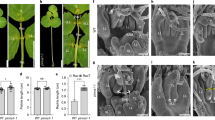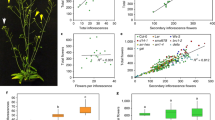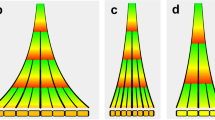Abstract
THE pioneers of biometry published many figures on the variation in flowers of numbers of petals, sepals, stigmatic bands, and so on. As they worked on herbs, they counted small numbers, and though they found differences in the means of different plants, were unable to compare the variances, either between plants or between the same plant at different times. Nyctanthes arbor-tristis Linn. (Oleaceae) sheds up to 1,492 flowers nightly, and up to 32,790 in a season, normally from September to early January in Calcutta.
This is a preview of subscription content, access via your institution
Access options
Subscribe to this journal
Receive 51 print issues and online access
$199.00 per year
only $3.90 per issue
Buy this article
- Purchase on Springer Link
- Instant access to full article PDF
Prices may be subject to local taxes which are calculated during checkout
Similar content being viewed by others
References
Roy, S. K., Curr. Sci., 27, 134 (1958).
Price-Jones, C., J. Path. Bact., 32, 479 (1929).
Author information
Authors and Affiliations
Rights and permissions
About this article
Cite this article
ROY, S. Regulation of Morphogenesis in an Oleaceous Tree, Nyctanthes arbor-tristis . Nature 183, 1410–1411 (1959). https://doi.org/10.1038/1831410a0
Issue Date:
DOI: https://doi.org/10.1038/1831410a0
This article is cited by
-
The variation of organs of individual plants
Journal of Genetics (1963)
-
Book reviews
Journal of Genetics (1962)
-
Non-Genetic polymorphism inBauhinia Acuminata L
Journal of Genetics (1960)
Comments
By submitting a comment you agree to abide by our Terms and Community Guidelines. If you find something abusive or that does not comply with our terms or guidelines please flag it as inappropriate.



